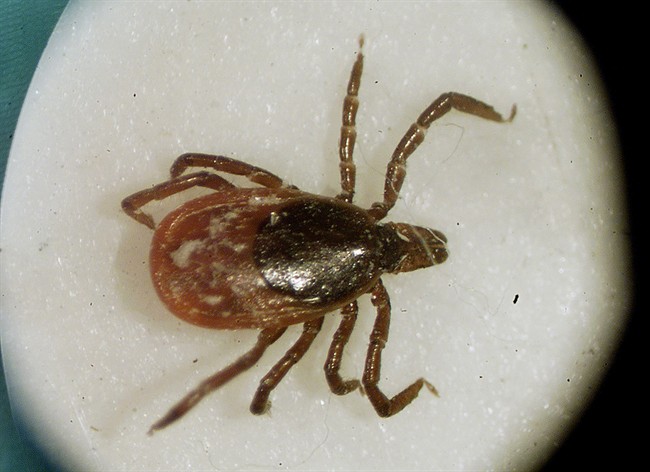WINNIPEG — The weather is warming up and with the rise in temperature comes a spike in a pesky critter in Manitoba: the tick.

May is Lyme Disease awareness month and it is one of several tick-borne diseases doctors say an increasing number of Manitobans are contracting.
The infection can lead to headaches, dizziness, joint pain, difficulty concentrating and even speaking. In some cases symptoms can linger for years.
“Ticks tend to come out in the spring and are present throughout the summer and fall, until there is snow on the ground,” said Dr. Richard Baydack from Manitoba Health, Seniors and Active Living.
WATCH:University of Manitoba Entomologist Kateryn Rochon explaining how to prevent, detect, and remove ticks

Before you head out camping or hiking this weekend, make sure you’re aware of risks associated with tick bites — and how to minimize your risk.
Risk and location
Blacklegged ticks, also commonly known as deer ticks, can carry the bacteria that causes Lyme disease.
In 2009, there were just cases 11 in the province. In 2013, that number spiked to 46.
WATCH: A look at Lyme and how the disease attacks the body

And the ticks carrying the bacterial infection are no longer sticking to remote rural bush.
READ MORE: Tick bite leads to Lyme disease for Winnipeg girl
They can now be found in Winnipeg, particularly in the southeast corner, along the Red River and Seine River corridors, said Baydack.
He said ticks also travel to areas that may have not been identified.
“Ticks move by hitching a ride on a deer or migrating birds, so they can be introduced to other areas,” he added.
WATCH: Tick season was on the rise in 2015 in Manitoba
Prevention
Baydack said the key is to check for ticks as soon as you’ve been in the bush. If you find one and pull it off right away, the odds of contracting Lyme disease are very low, because the tick usually feeds within 24 hours.
Blacklegged ticks are most commonly found in wooded or forested areas, as the these locations give them with a humid habitat in which to survive. If you’re in the areas it is important to:
- Use trails, whenever possible, and stay to the centre of hiking trails or paths
- Wear light-coloured long pants and long-sleeved shirts
- Tuck in clothing (pants and socks) to create a barrier
- Use an appropriate tick repellent.
For more information about Lyme disease, areas with higher concentrations of ticks, and preventative measures, you can visit the province’s website.





Comments